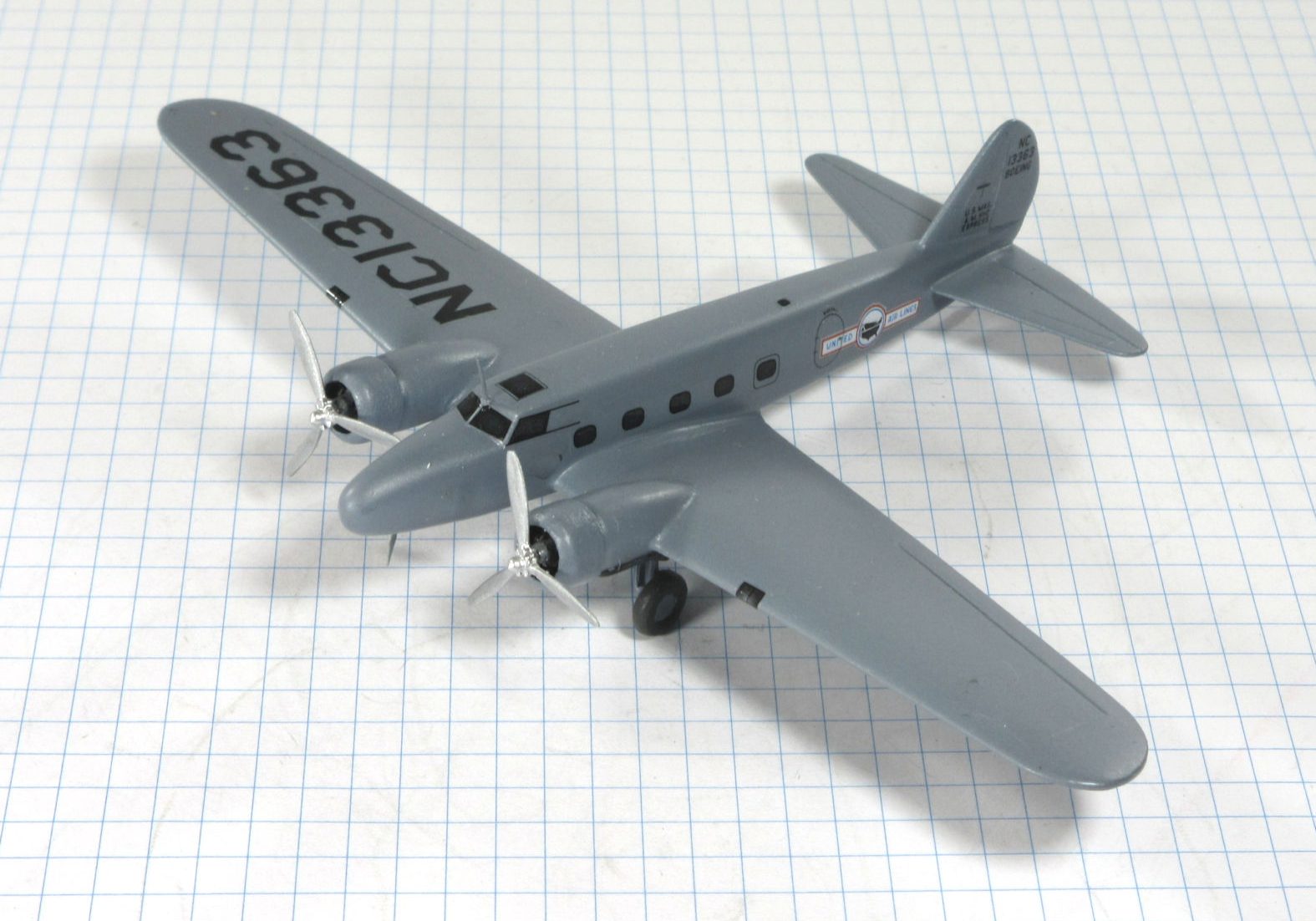This is a model that I’ve been wanting to make for many years but which hasn’t existed until this year. The Boeing 247 is a historically important aircraft which many call the first modern airliner. There had been other significant airlines before, such as the Fokker and Ford trimotors, but the Boeing 247 combined a modern all-metal construction with a fully cantilevered monoplane wing design, retractable undercarriage, powerful motors and other innovations to being a new level of speed and passenger comfort to air transport. Despite their significance only 75 were manufactured
The Boring 247 is perhaps more important for the competition it inspired. They began service with United Air Lines in 1933 and were so good that other airlines wanted to order them as well. However, Boeing was part of the United Aircraft and Transport Corportation, as was United Air Lines, so when TWA tried to order Boeing 247s the offer was declined. This sent TWA to other aircraft manufacturing companies which resulted in the design of the Douglas DC-1 prototype, the Douglas DC-2 and the enlarged DC-3. Without the Boeing 247 the Douglas DC-3 may never have been made.
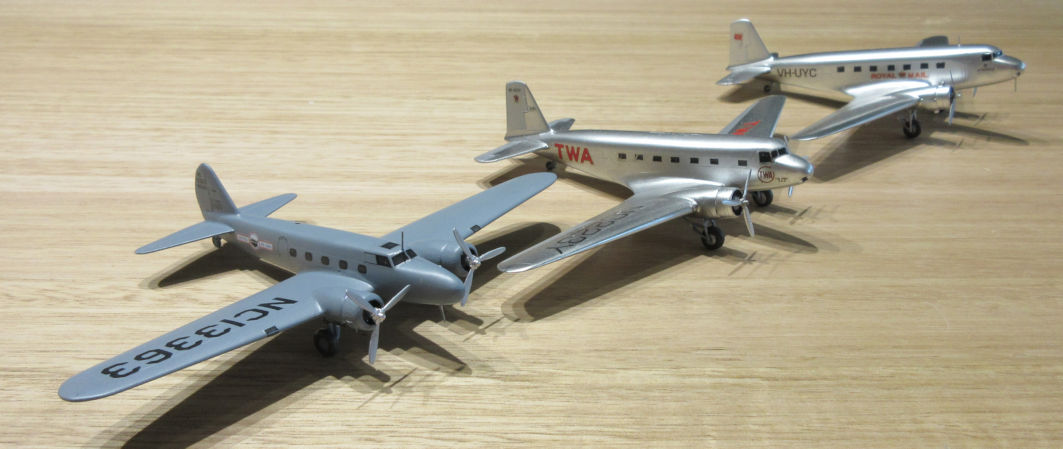
Boeing 247D, Douglas DC-1 and Douglas DC-2, all in 1/144
There has been a kit of the Boeing 247 in 1/72 for many years, the Williams Brothers kit that dates from the 1970s. Like many other Williams Brothers kits it is nicely moulded and good looking but also a bit of a bugger to construct well. The kit is not common these days but I picked one up at a Swap and Sell for a reasonable price and I see they still turn up on ebay from time to time at reasonable prices. The only really significant problem with this kit, from my perspective, is that it’s in 1/72 rather than 1/144, which means it can’t be viewed in relation to other Boeing airliners such as the Boeing 707 and 747.
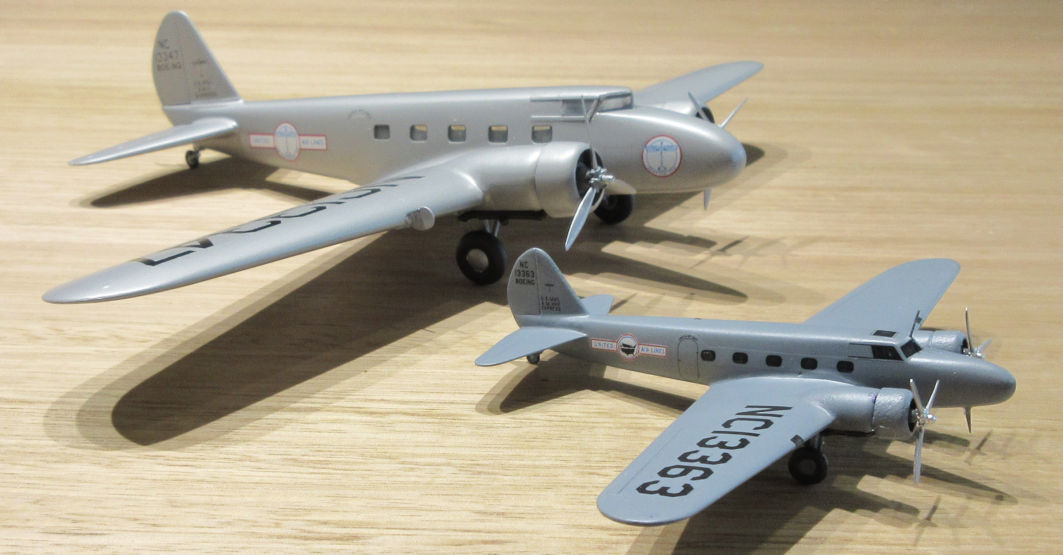
Williams Brothers Boeing 247 in 1/72 and Welsh Models Boeing 247D in 1/144
As soon as I saw this 1/144 kit was available I placed an order, and when it arrived I was not disappointed. It is not as refined as the Williams Brothers kit, for example there are no undercarriage bays under the wings which are instead represented by a couple of decals but, really, this kit is no more detailed than it needs to be in this scale and little details such as the engines are as finely moulded as in many 1/72 kits. The model is simplicity itself; a one piece fuselage, wings and tail planes and engines in their cowlings. There are also some parts for the undercarriage and propellers, a very nice little decal sheet, and that’s all there is, or needs to be.
Assembly is simplicity itself. Glue on the wings and the tail planes to the fuselage, and then the engines to the wings, and most of the work is done in less than an hour. I usually put in little metal pins to attach those pasts to the fuselage just to be on the safe side, which might add another fifteen or twenty minutes to the build time. In the past I’ve used superglue to attach these parts but I’ve been trying five-minute epoxy of late because it gives a little time to adjust parts to fit while that glue sets, whereas with superglue you have to get it all lined up properly before the gluing, which can often go wrong. It worked well for me this time and I will be using more epoxy glue in the future. It is also something of a gap filler, which is useful in models like this one.
I had three disappointments with this kit.
The first is that this is a Boeing 247D with the swept back windscreen rather then the swept forward windscreen of the earlier version. It might not be too difficult to do a simple conversion but I thought the registration on the decals was for the 247D and I didn’t want to have to mess around with decals as well as the model itself. So I’ll live with that one.
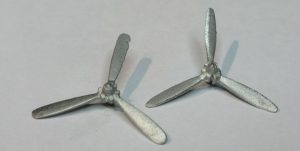
The second is that the propellers in the kit are far too wide at the tip and have an unpleasant blobby look. I couldn’t find any likely replacements in my spares box so I was forced to reshape the propeller blades myself. This is normally a rather precarious process because propellers in this scale are always fragile, but it turned out that the propellers in this kit are tough so reshaping then did not result in any breakages and was achieved fairly quickly and easily.
The third disappointment is one I bought on myself. It appears that the early United Air Lines Boeing 247s were unpainted in a kind of duraluminum that has a distinctive grey metallic finish. Like many metallic finished it appears different depending on many factors including the amount of light, the angle of the photo and the angle of the sun To achieve this with my earlier 1/72 Williams Brothers model I mixed grey and silver paint, which worked okay but was missing something. The instructions of the Welsh Models kit says nothing more than ‘Blue-grey’ which was, I thought, a good starting point. To achieve something that looked right to me I started with some SMS USN Intermediate Grey, added in a lot of white (a bit of gloss and a bit of matt) and then quite a lot of MRP Silver Metallic Fine Surface Primer. I then fiddled around with this combination until I got something that looked right to me.
I was delighted when I sprayed a couple of coats onto the model. It achieved the look I waa after with a grey finish that had the metallic tinge that changed character depending on how I looked at it. Congratulating myself on my genius I then applied the decals and was immediately disappointed. The decals changed the character of the paint under them and had a different sheen to the finish I’d achieved, with a very unpleasant resulting look. This was very evident on the big registration numbers on the wings and made the model look wrong. There was nothing for it but to apply some varnish to give the model’s finish an overall consistency so, with a heavy heart, I applied a coat of Tamiya rattle can (decanted of course) semi-matt.
The result is not as bad as I had feared. The model now looks a little darker than it did before and has lost most of that variability in tone. The semi-matt appearance also inspired me to paint the windows in some Aqua Gloss Clear so they stand out a little against the semi-matt of the rest of the model. Despite my disappointment this little Boeing 247 is one of my happier modelling achievements in the past year or so. It is now also good to have a model in this scale to stand underneath a Boeing 747.
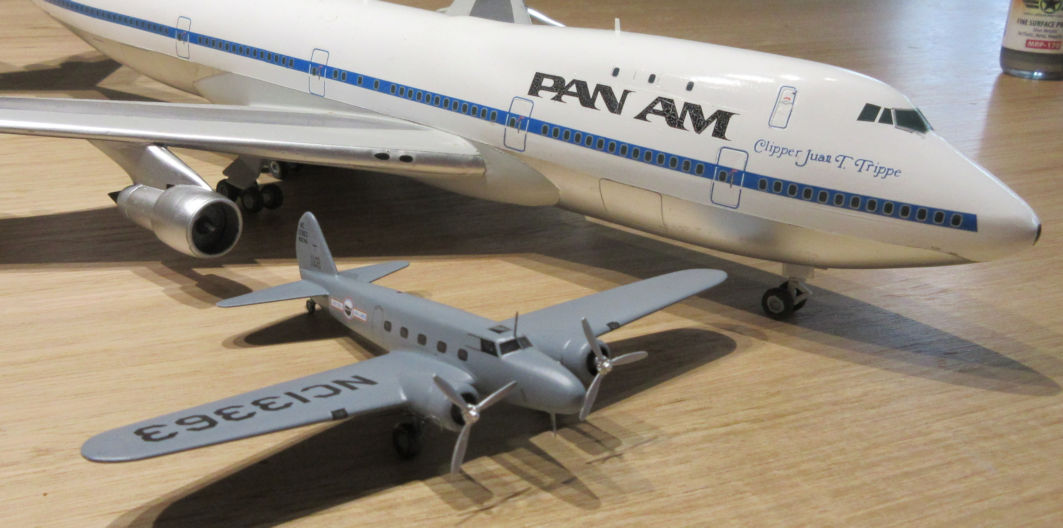
PS A technical note on aircraft design. You will notice that the fuselage of the DC-1 is a lot deeper than that of the Boeing 247, a lesson that Douglas learned from Boeing. One of the less attractive features of the Boeing aircraft was that the wing spar intruded into the cabin so you had to step over it as you moved around the cabin. By making the Douglas fuselage deeper the spar was hidden below the floor and not in the way when moving around in the cabin.
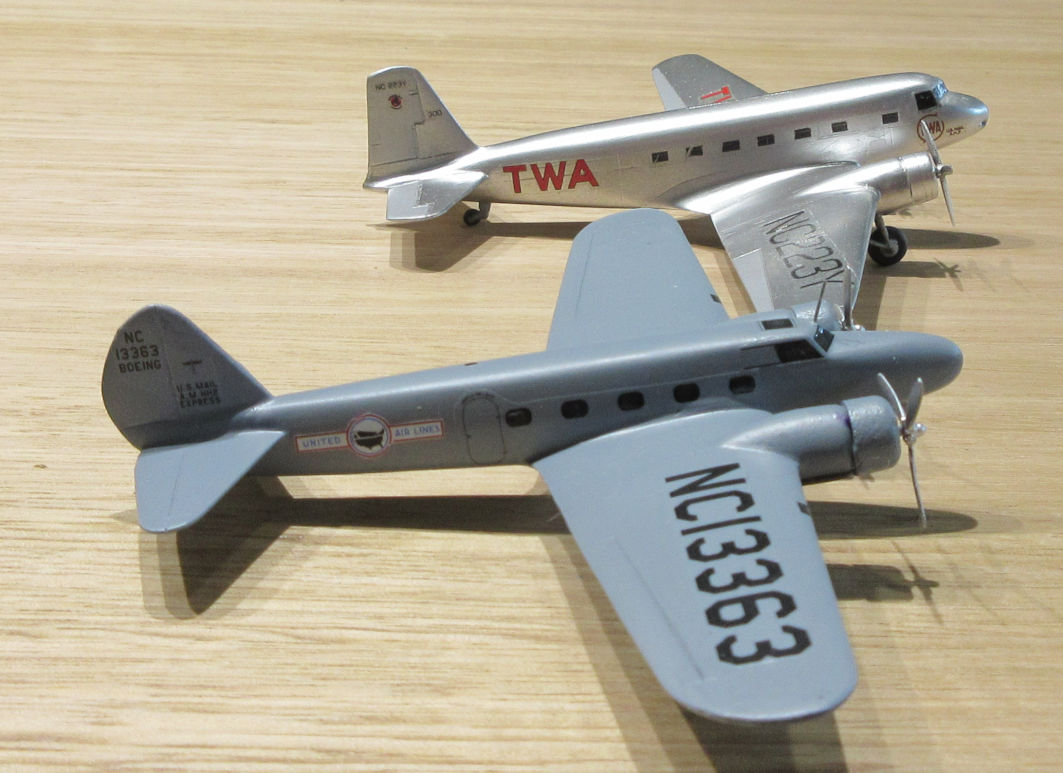
Leigh Edmonds
August 2006
